Nine finals, nine trophies – what an achievement for Zinédine Zidane and his beloved Real Madrid. Despite winning no major trophies last season, Real Madrid successfully won the 2020 Spanish Super Cup after beating Atlético Madrid 4–1 on penalties, credit to the lucrative new format of the classic tournament.
Diego Simeone’s brilliant defensive tactics nullified Los Blancos’ attacks for so many times; helped his team to concede nothing after 120 minutes despite having one day fewer to rest. However, Thibaut Courtois’ superb performance and Federico Valverde’s game-saving cynical tackle were the reasons Los Blancos came home with the silverware. This tactical analysis will inform you how the match unfolded.
Lineups
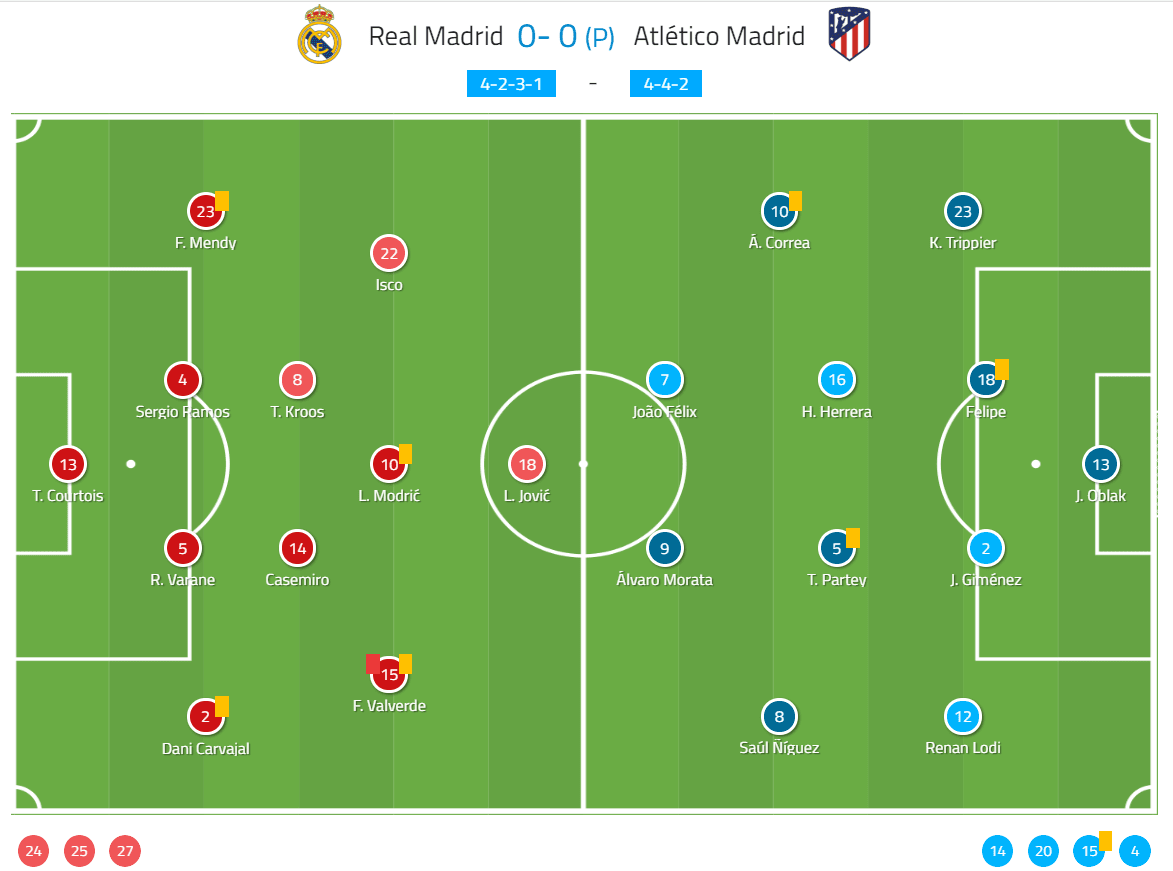
Zidane chose 4–2–3–1 for his team. Sergio Ramos and Raphaël Varane started at the heart of the defence, while Toni Kroos and Casemiro provided support in front of them. Up top, Luka Jović led the frontline with the trio of Valverde, Luka Modrić, and Isco behind him. Names like Mariano Díaz, Rodrygo Goes, and Vinícius Júnior had to start the game from the bench.
In the opposite side, Simeone opted for the regular 4–4–2. Ex-Tottenham player Kieran Trippier and Brazilian Renan Lodi were chosen for the full-back spots. In front of them, Ángel Correa and Saúl Ñíguez were picked to play as the wingers. Former Real Madrid striker Álvaro Morata and Portuguese sensation João Félix spearheaded Atléti’s attacks. The bench was filled with players like Santiago Arias, Marcos Llorente, Vitolo, and Stefan Savić.
Atlético’s disciplined defending (part one)
As usual, Los Rojiblancos put their notorious defending in the show. In their 4–4–2, Atlético were not only solid in deeper areas, but also aggressive in their mid-block defending. On top of that, Atlético deployed man-oriented zonal marking. It meant that Simeone would let his players stray away from his defensive line and follow the opponent to a certain extent. This part of the analysis will show how the defensive tactics worked.
First of all, Atlético would force Real Madrid to play through the flanks. The horizontally-compact nature of Atlético’s 4–4–2 was the main reason behind this. However, they added another feature to this approach by sending the ball-side defensive midfielder to press Madrid’s ball-handler in deep areas – mainly Kroos. This aggressive defending limited Kroos’ time on the ball, closed his front passing lanes and forced him to play the ball wide.
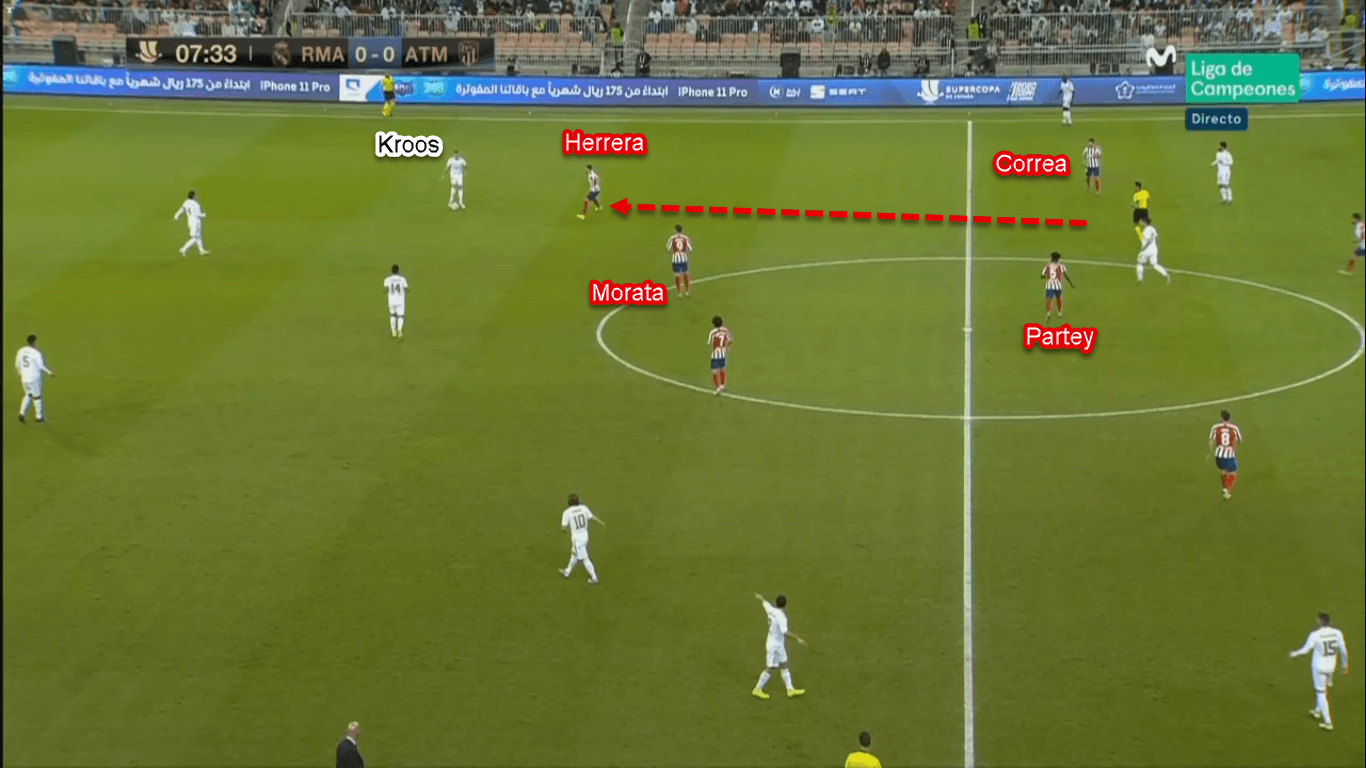
Next, even when the ball has reached the wide areas, Atlético kept their aggression. The ball-side winger would go up from the midfield line to press Real’s ball-handling full-back, parallel with the strikers. Behind him, Atlético’s ball-side full-back would also step up from his area to prevent the ball from being played to the winger. Additional defensive supports were given by the nearest defensive midfielder who would close another forward passing option to Los Blancos’ attacking midfielder.
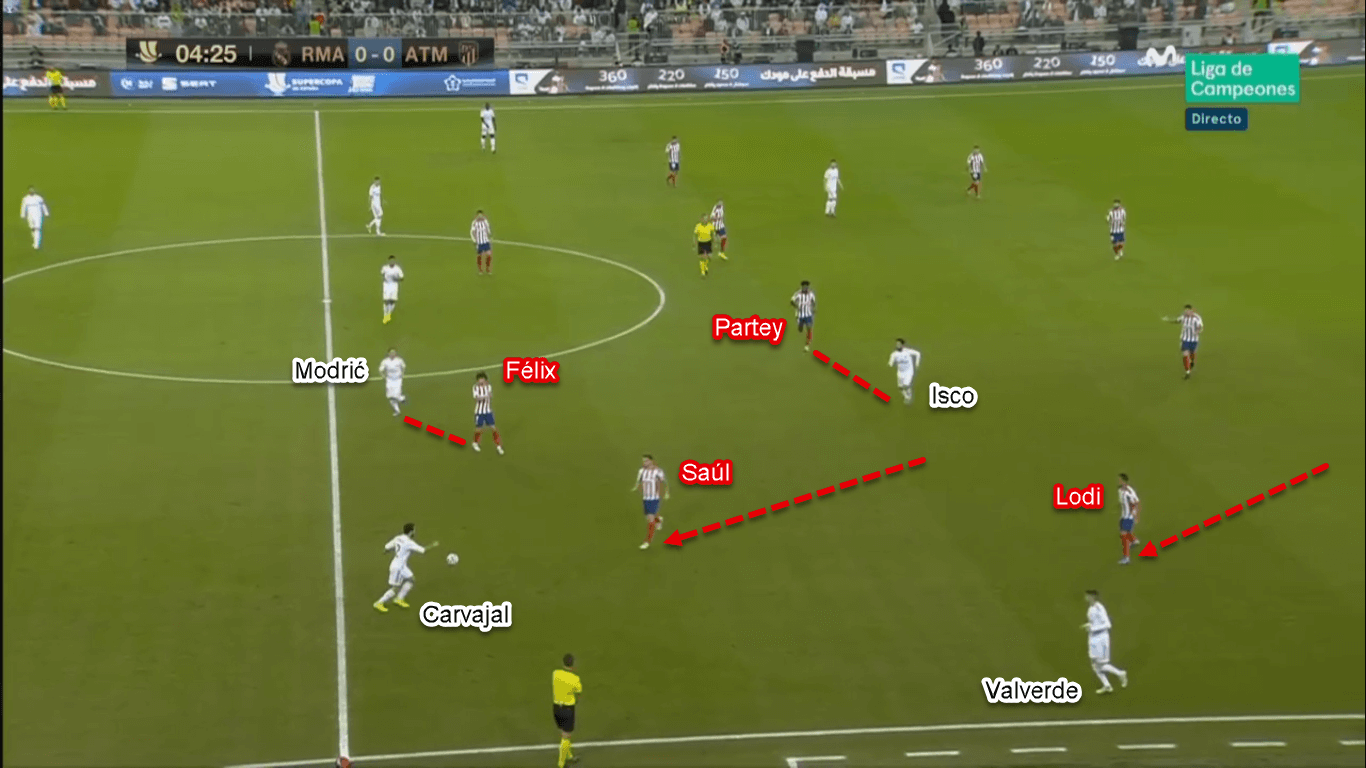
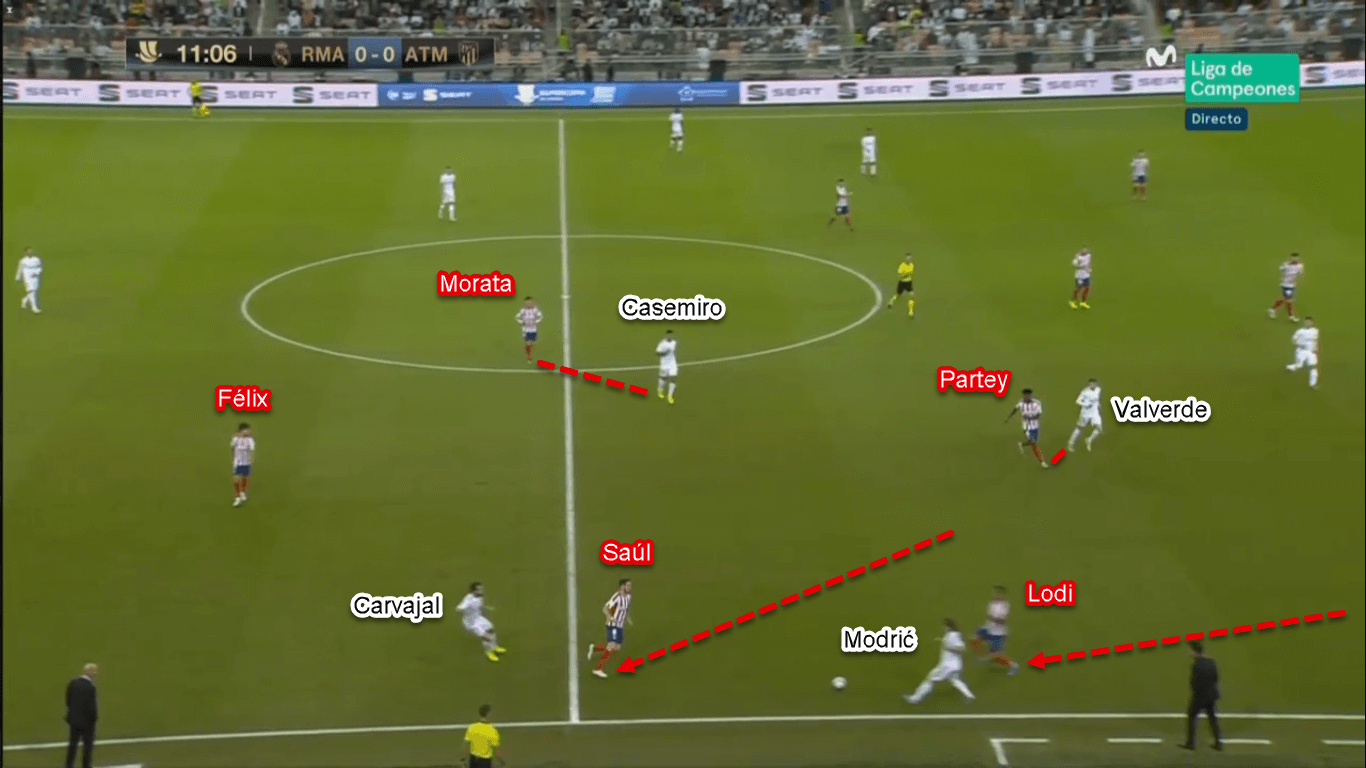
Atlético’s disciplined defending (part two)
Sometimes the men in white were able to distribute the ball to wide areas quick enough, giving them space and time to try making penetrations in the final third. However, El Real sometimes waste this advantage away which we’re going to discuss later in this analysis.
If Madrid successfully got the ball to the flank quickly, they would try to make short combinations before getting into the box. Atlético would counter this in two ways, as follows:
First, by sending the ball-side defensive midfielder to join his comrades on the flanks. Not only that, but the ball-far defensive midfielder would also happily leave his area to load the ball-side area and give additional pressing support.
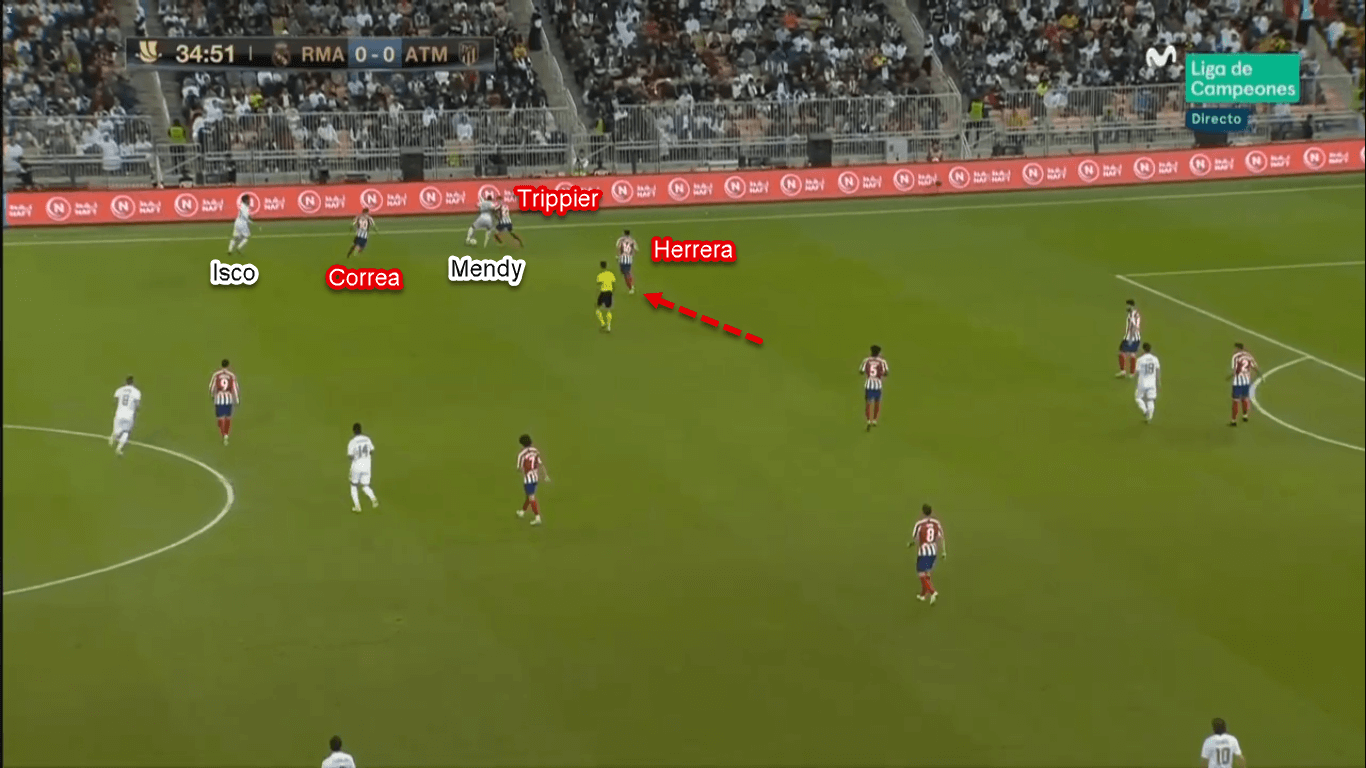
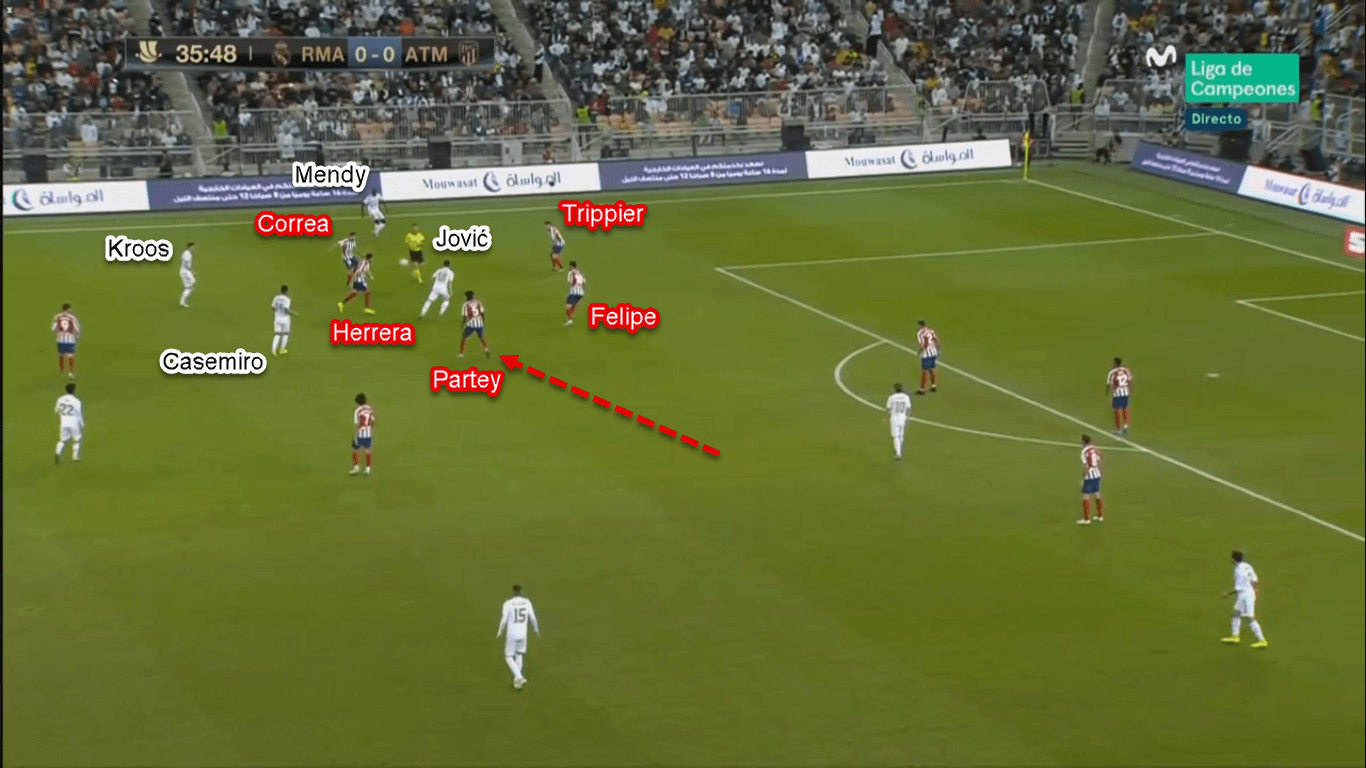
Second, they instructed the ball-side striker to drop deep and join the press. Such an approach was used by Atlético to prevent Madrid from making overloads, or even better, to outnumber Madrid’s attackers and steal the ball from them.
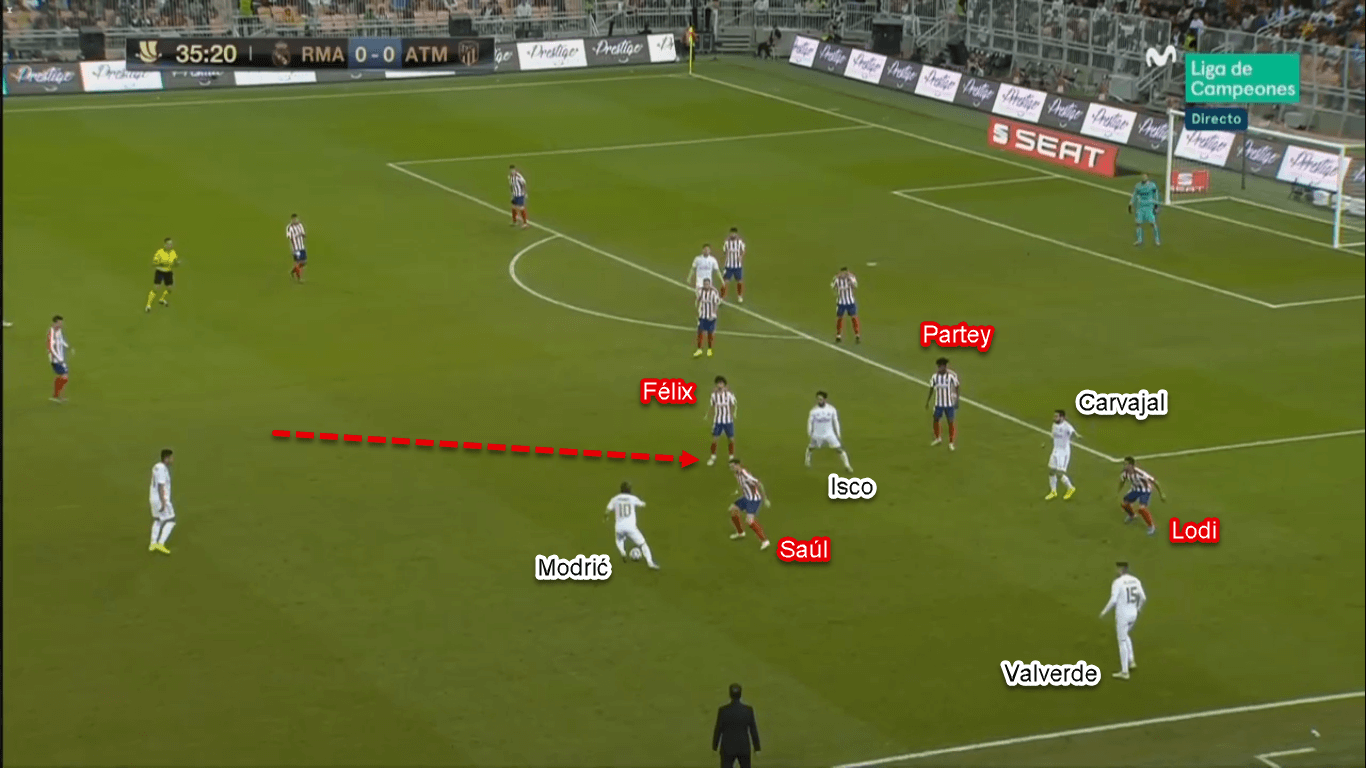
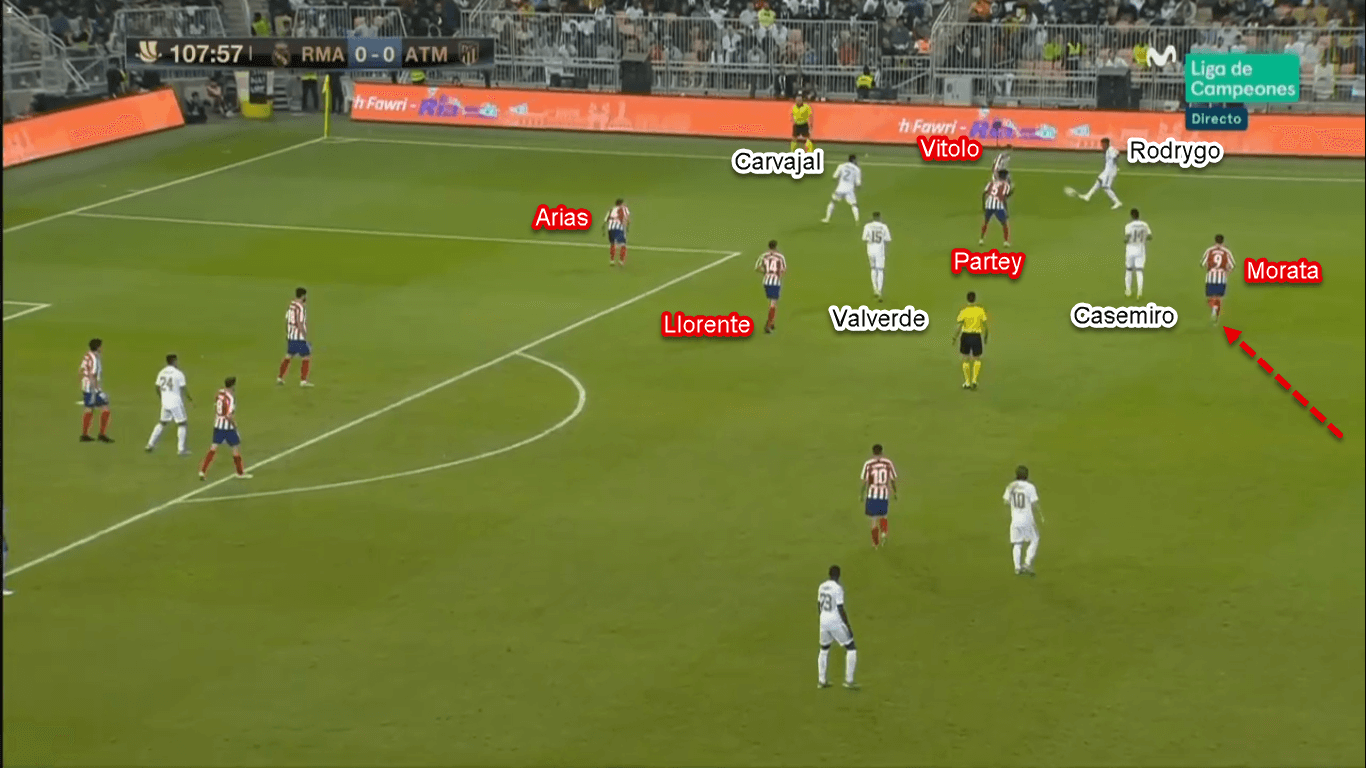
Combination-heavy approach from Los Blancos …
Now we’re going to talk about El Real’s attacking approach. As mentioned before, Madrid utilised the flanks more often due to the central lanes being closed by their rivals.
In the flanks, Madrid chose to load the ball-side area with players. This approach would give more short combination routes for them, which made them more unpredictable. Having players with good mobility and supreme ability in tight spaces like Valverde, Modrić, and Isco at their disposal was also the reason for this approach to be used.
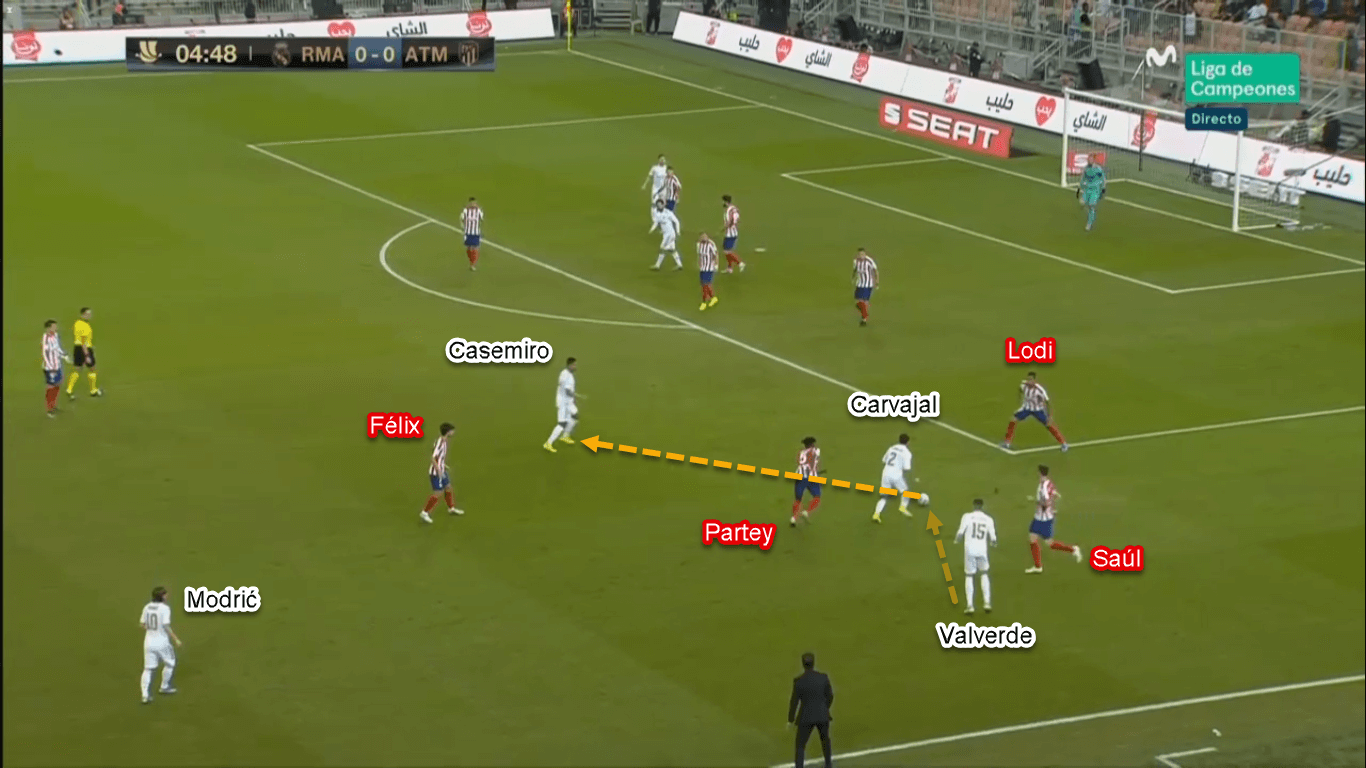
Not only were they loading the ball-side area, but Madrid’s attackers would also actively interchange their positions to disrupt Los Rojiblancos’ defensive schemes – mainly to stretch the defensive line and open the channels to be attacked. Madrid would also try to free one player in the space to create chances after making the short combination.
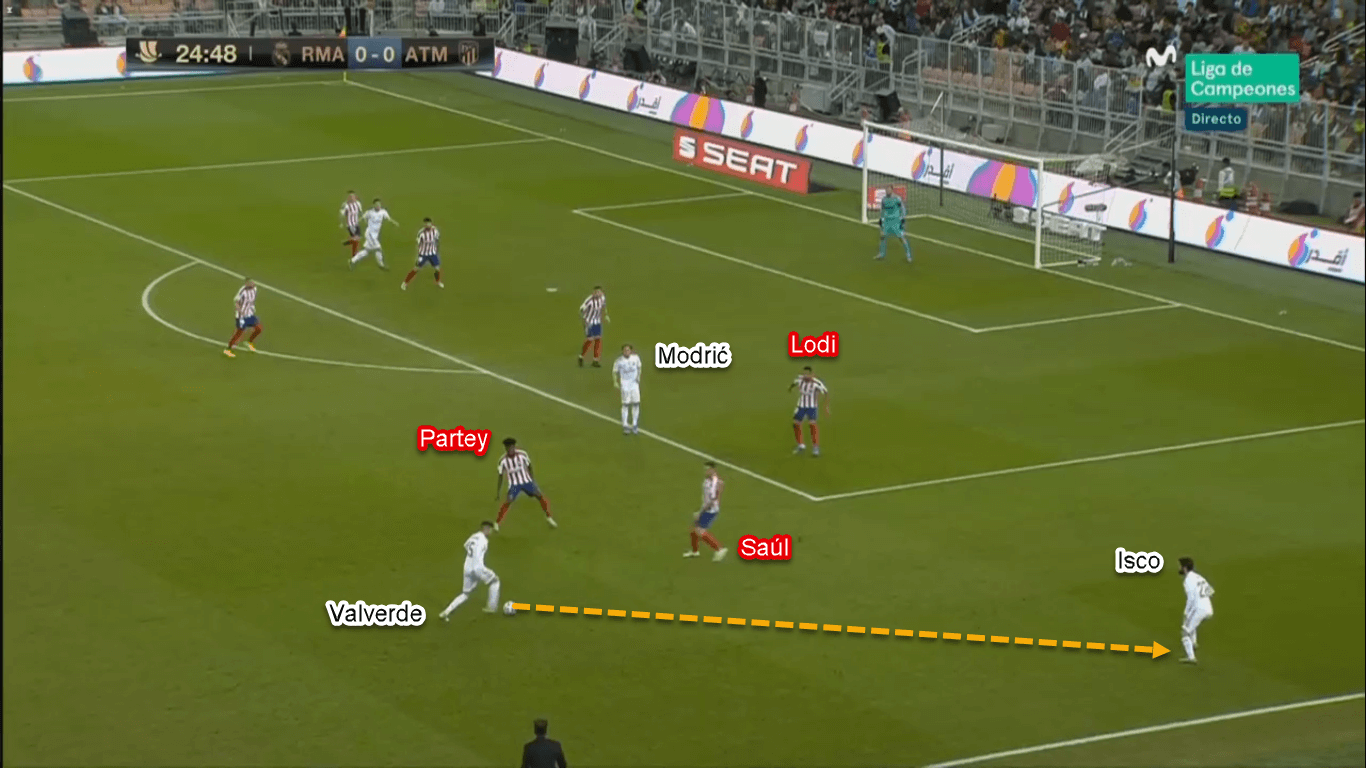
… but not so threatening
However, Madrid faced some issues in their flank-focused offensive tactics. These issues couldn’t help them take advantage of the open space in Atlético’s man-oriented zonal marking.
Mainly, they lacked players who can attack the space rapidly. All of Madrid’s attacking players ranging from Valverde, Modrić, Isco, to Jović, or even Casemiro, rarely offer runs in behind or into space. Usually, they would rather ask the ball to be played into their feet rather than sprinting to the open area. Even when they tried, they lacked pace and explosiveness to punish the defensive problem.
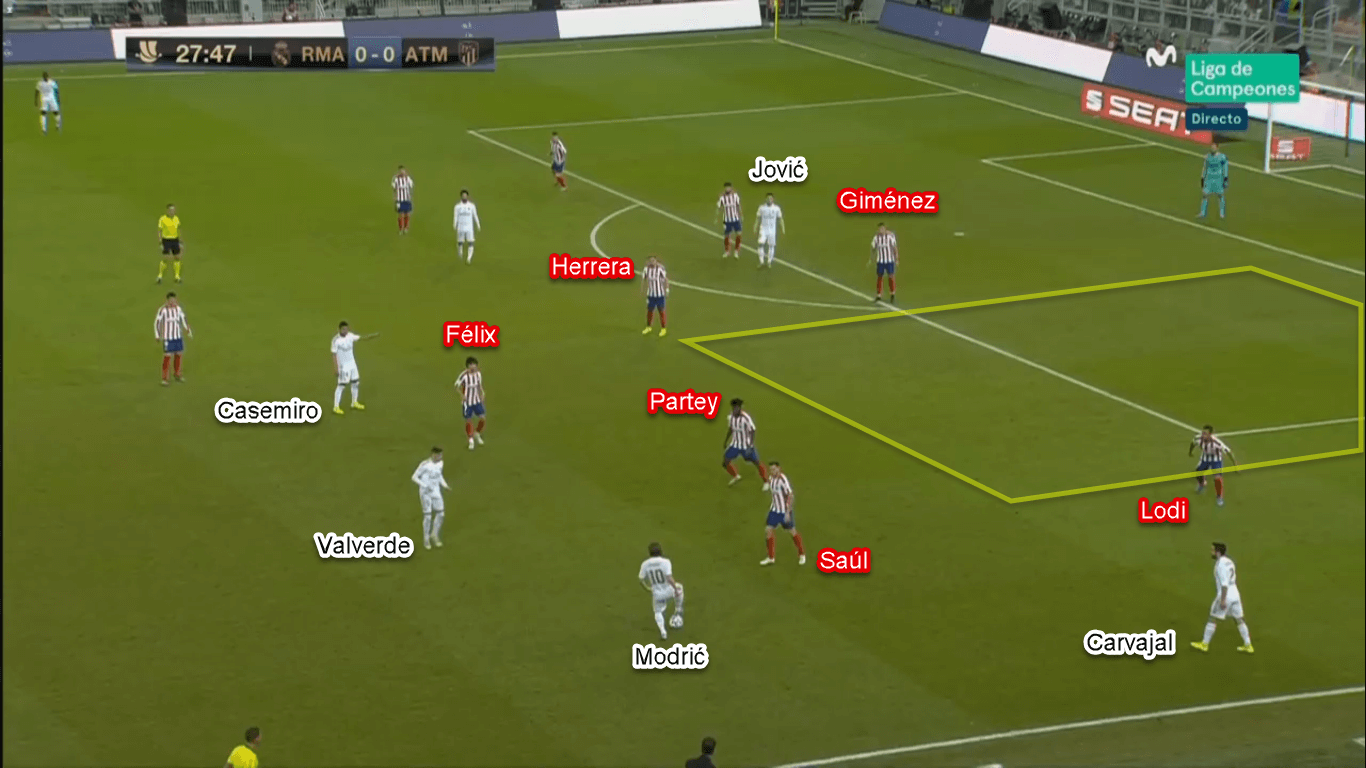
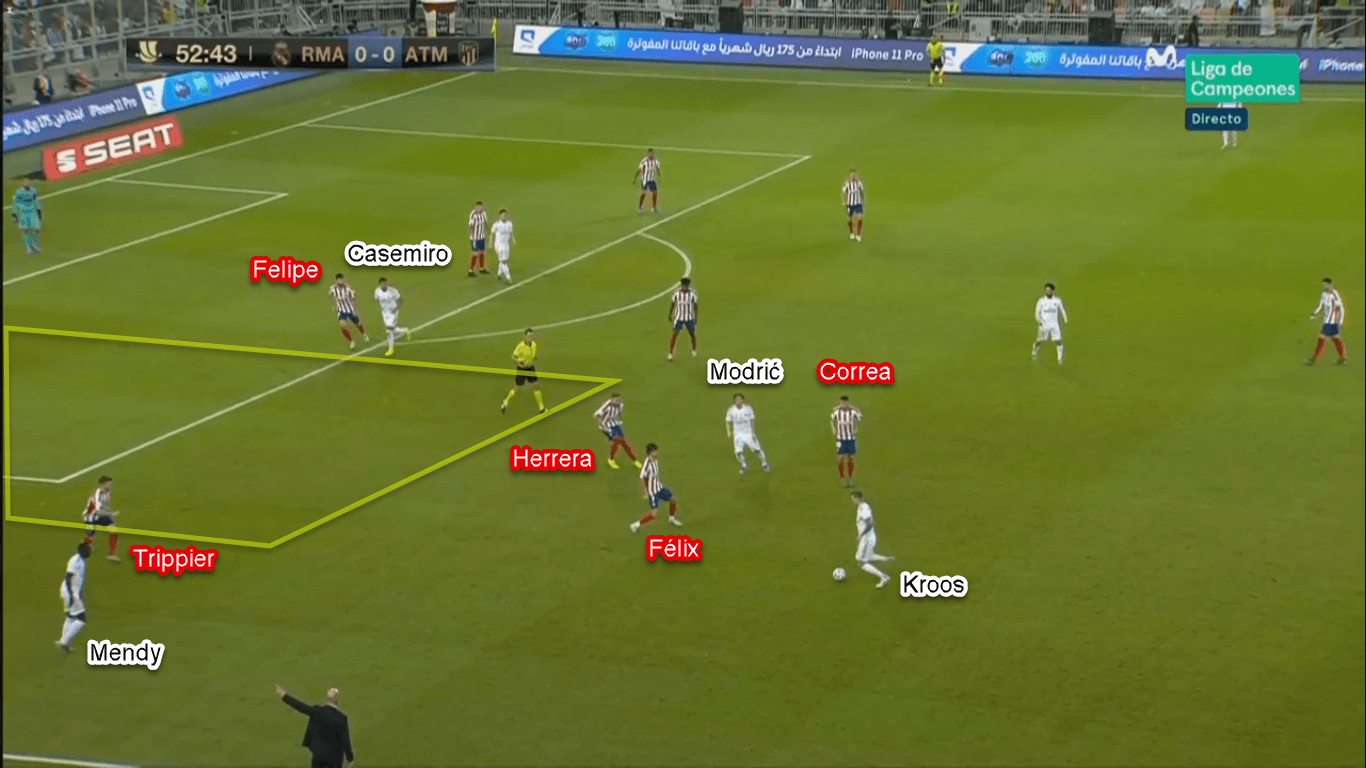
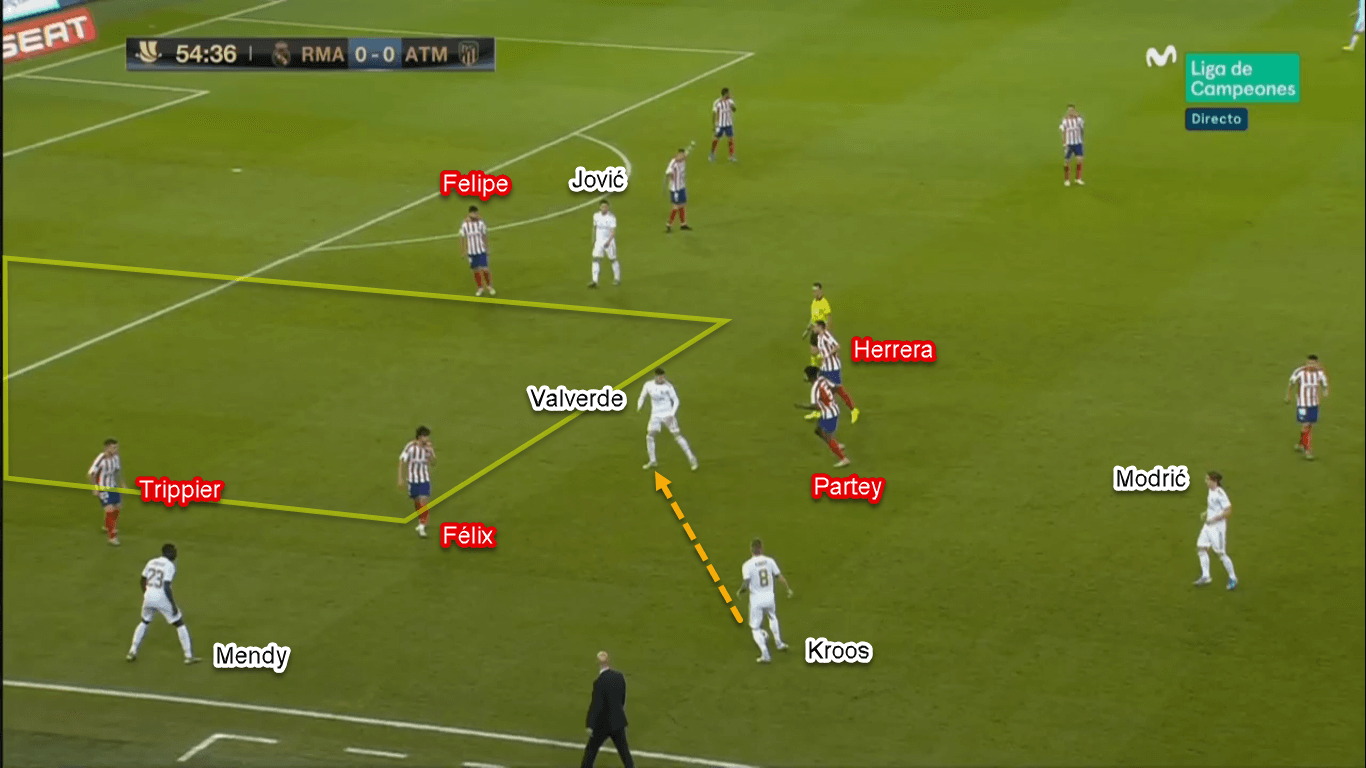
Later in the game, Zidane opted to use Mendy to attack the space left by the marauding Trippier. Even further, he subbed on lightning-quick Rodrygo and Vinícius Júnior for Isco and Kroos respectively, but the youngsters didn’t make much of a difference.
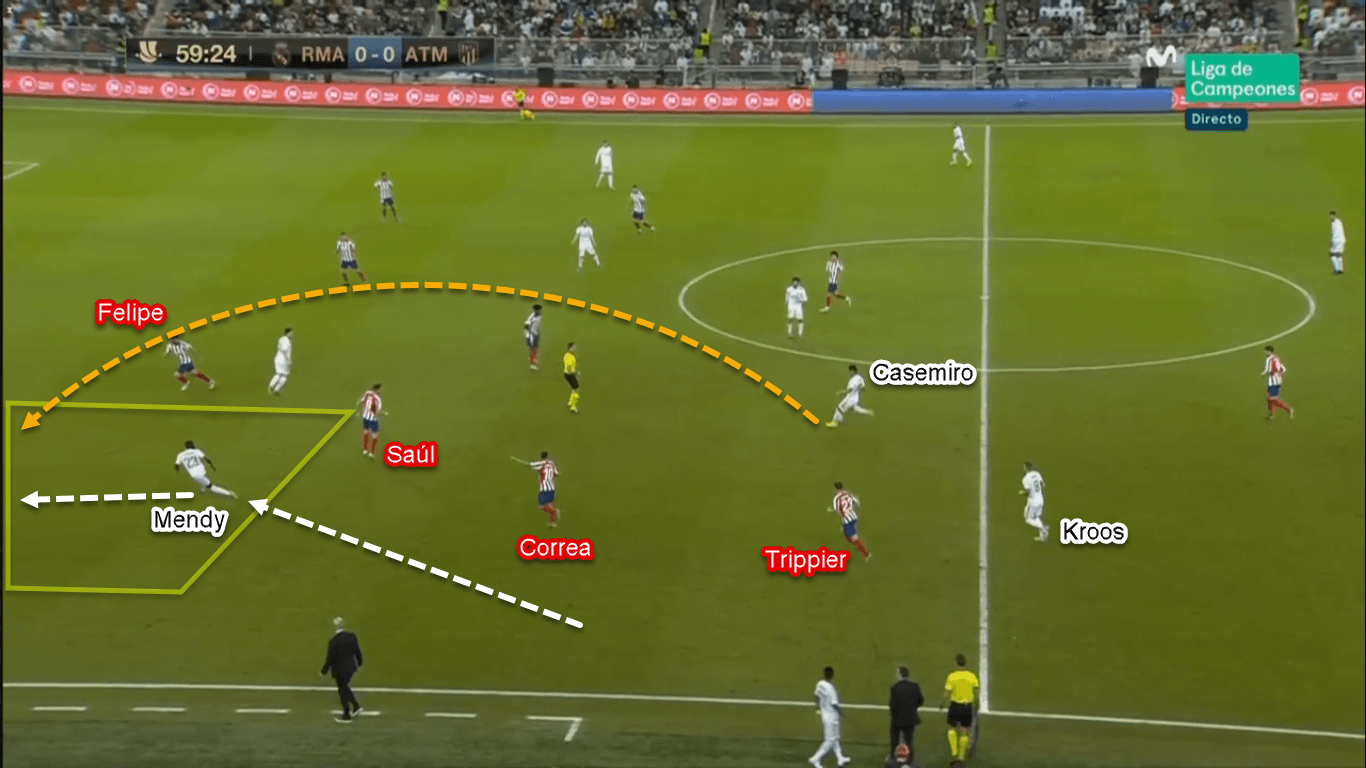
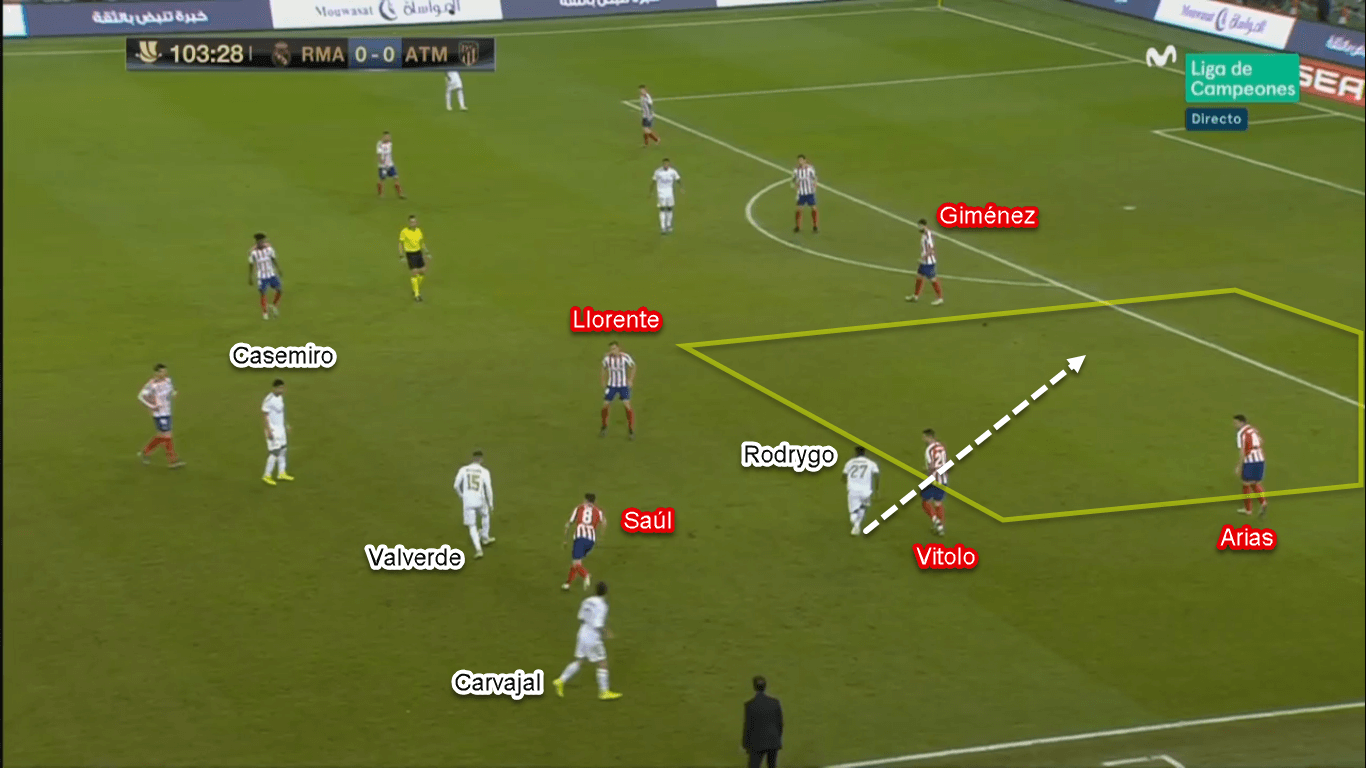
Another reason Madrid’s threats were limited was due to their rather slow approach in the flank. With having no quick dribblers in the lineup and midfielders preferring the ball to be played into their feet, Madrid often wasted their overload advantage, thus allowing Atlético to reorganise their defence.
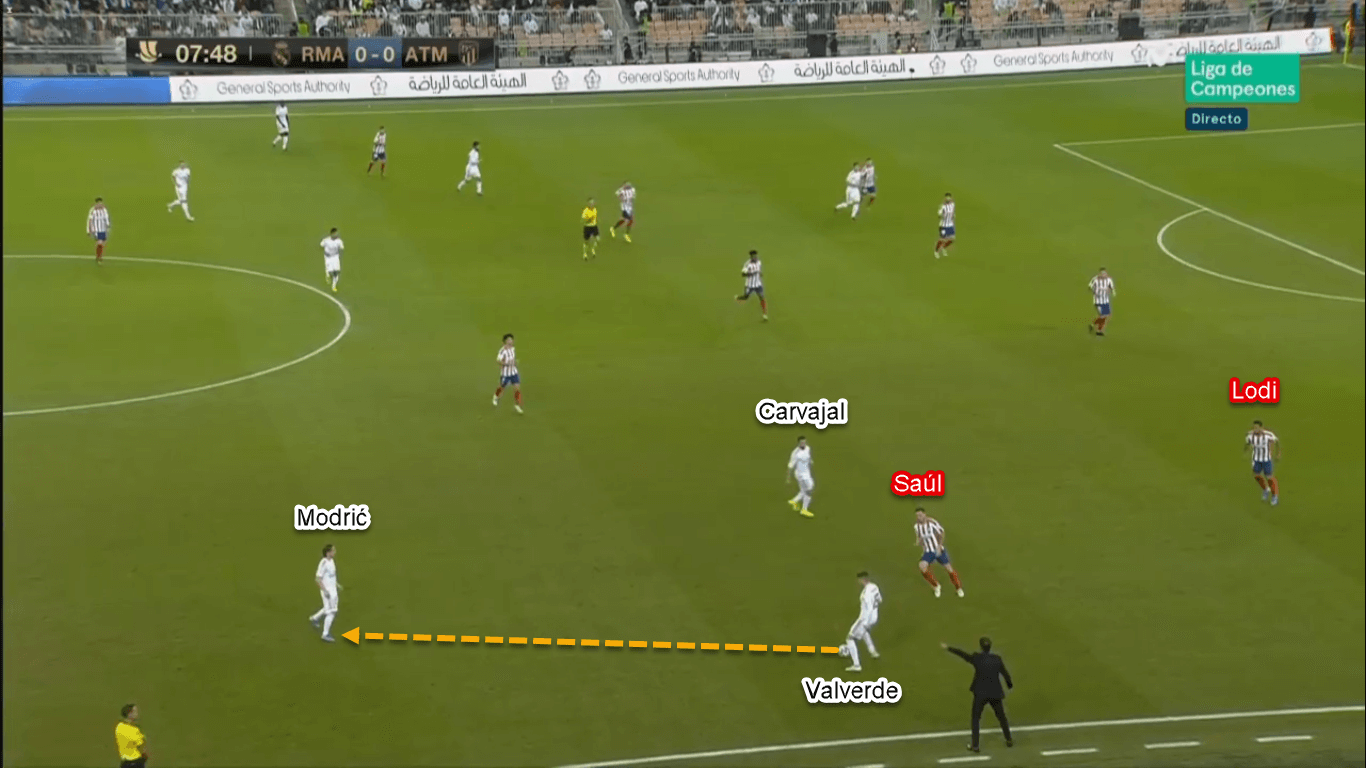
Atlético’s athletic attackers
Oppositely, Atlético played a rather direct approach compared to their rivals. Simeone would instruct his attackers to be narrow, putting his wingers inside and allow the full-backs to provide width. If the ball came long from the back, narrow attackers would give Morata more lay-off options to continue the attack. If the ball goes forward in a transition, the narrow set-up would allow the attackers to make their incisive combinations more unpredictable.
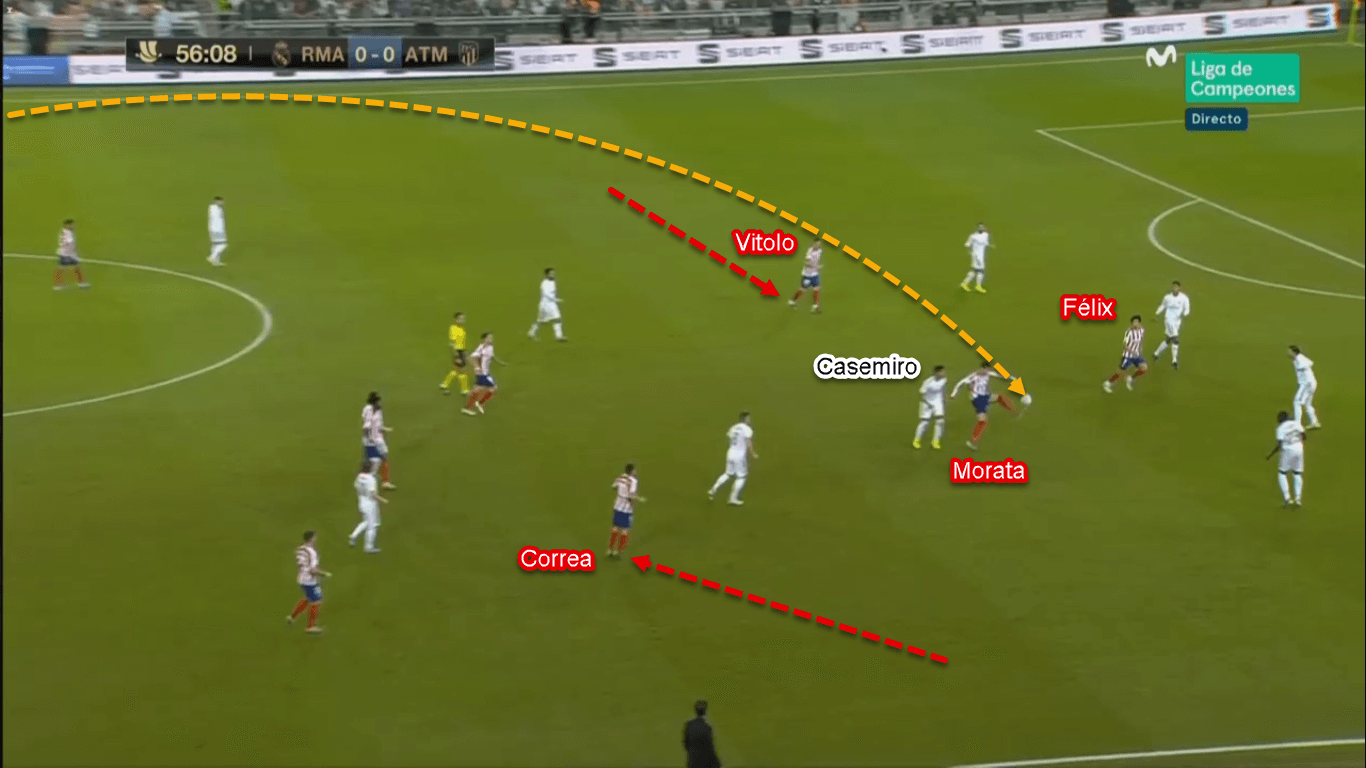
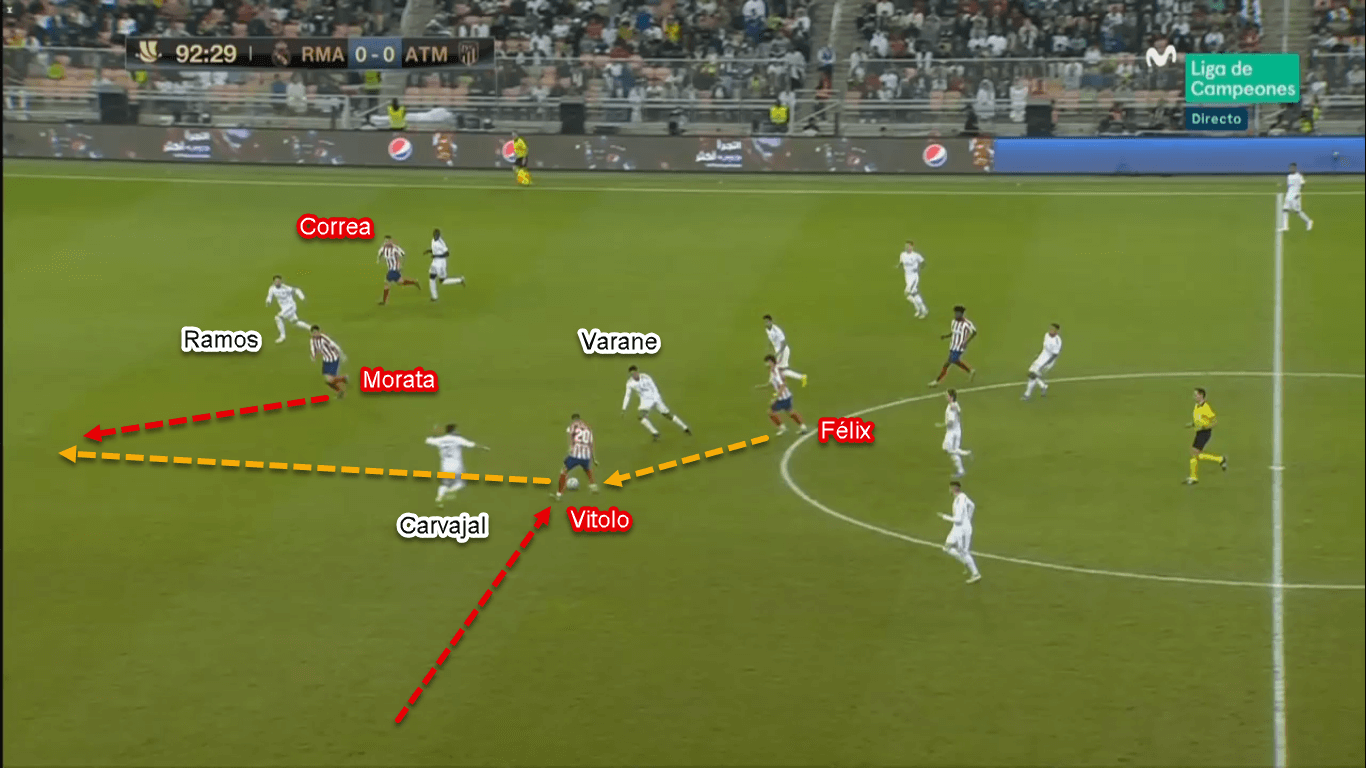
Another facet Simeone used in his attacking approach was the right-winger, Correa. Compared to the left-winger — Saúl — the Argentine has more mobility, quicker pace, and sharper movements which allow him to make runs in behind and attack the space better. Utilising the width provided by Trippier, Correa would attack the space behind in between positionally-stretched Mendy, and left centre-back Ramos. Trippier then would send a through-ball to that area for Correa to be used, either to make a cross or a shot.
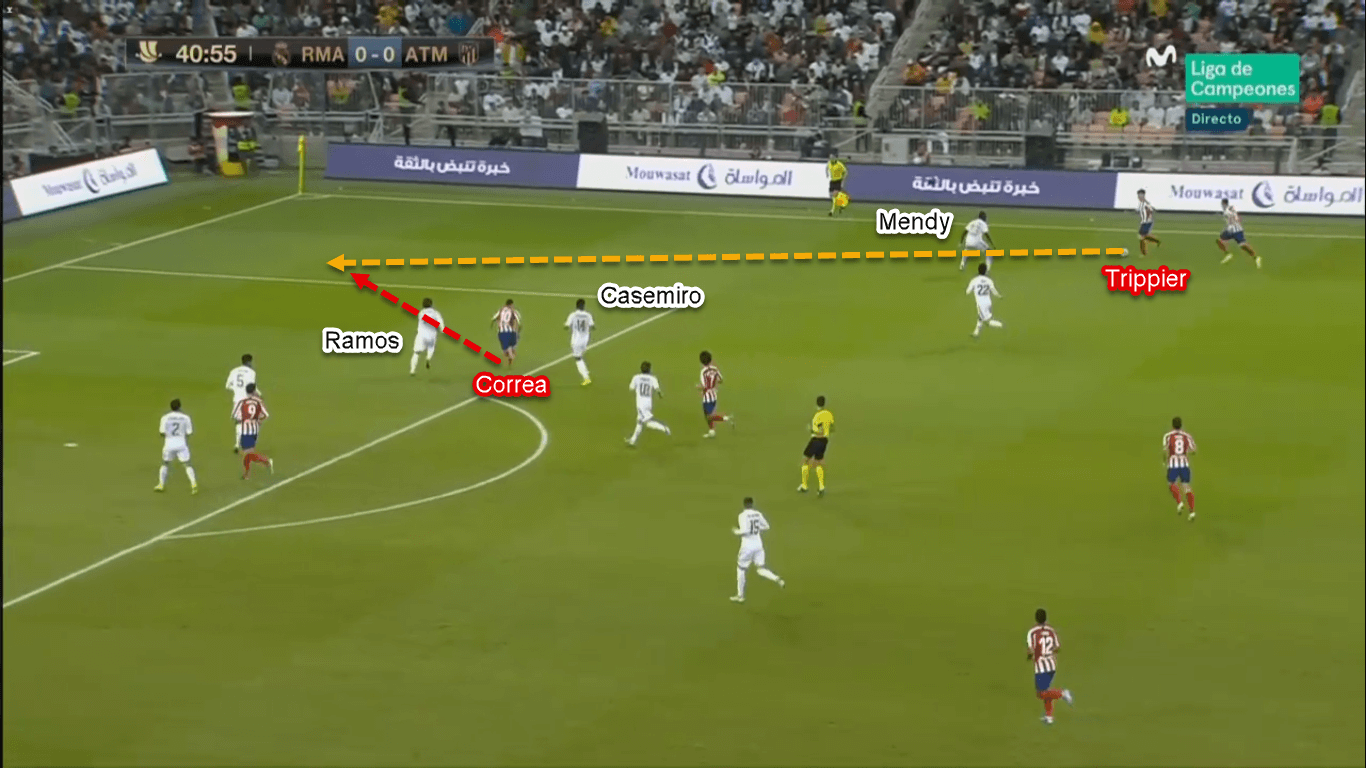
Mendy was also targeted by Los Rojiblancos due to his lack of defensive awareness compared to Carvajal which forced Ramos, and later Rodrygo, to cover him from time to time. In fact, Atlético’s biggest chance also came from this approach, but with Morata instead of Correa as the main outlet.
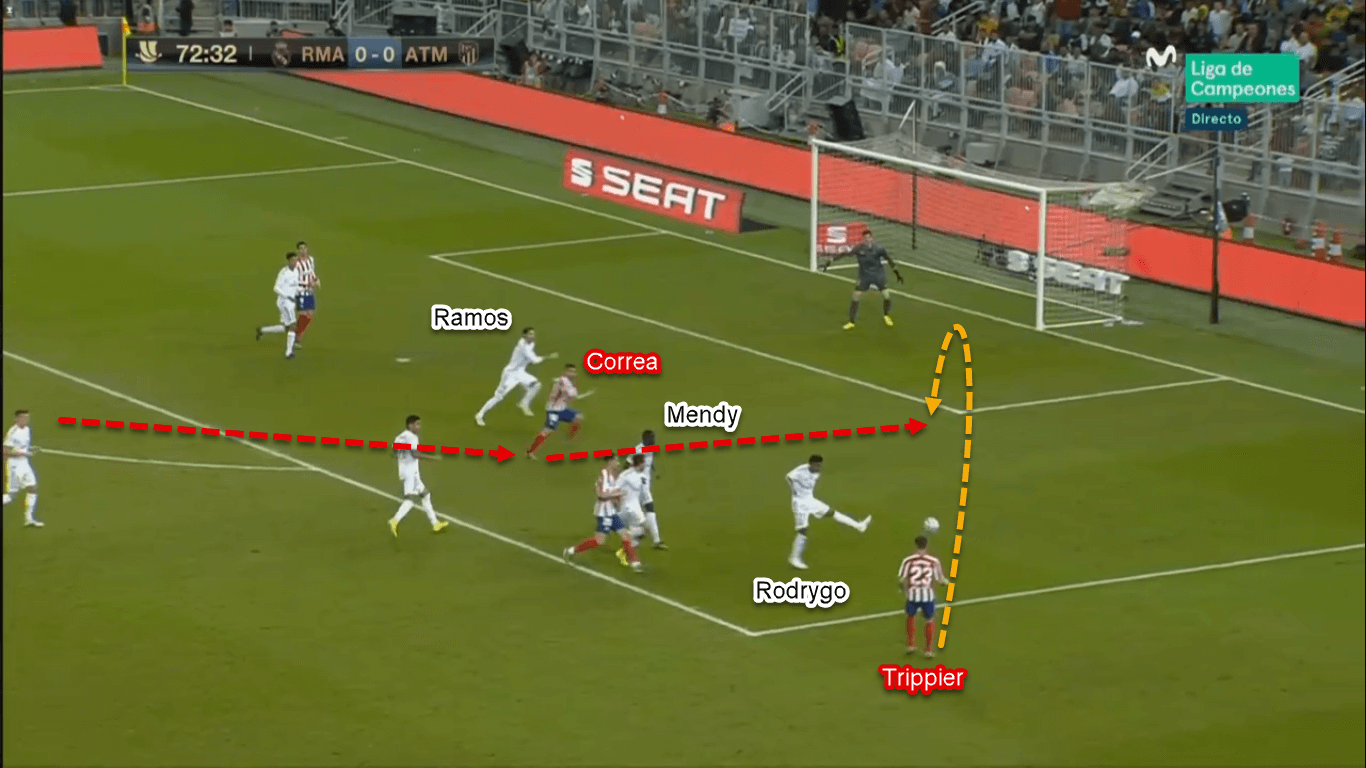
Conclusion
In spite of the silverware reward, both Zidane and Simeone went conservative with their tactics as shown by the relatively minimum tactical adjustments for two hours of football. Huge credit must be given to Courtois and Valverde as they arguably won the game for El Real: one with an amazing display between the sticks and one with a late-game sacrifice worth an MVP award.
Now with only five points separating both Madrid clubs in the league, and huge knock-out games waiting next month, Zidane and Simeone have to work harder to improve their teams’ tactics. Failing to do so would only make their jobs more unsafe this summer amid all the growing rumours.





Comments